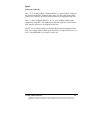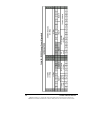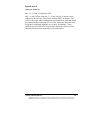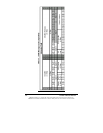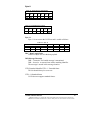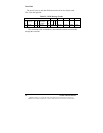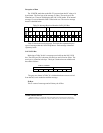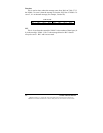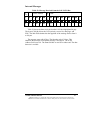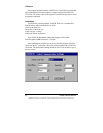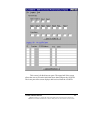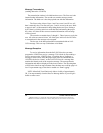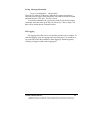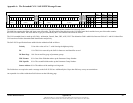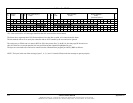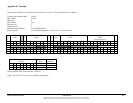
34 1939STB4600 Manual
B&B Electronics Mfg Co Inc – 707 Dayton Rd - PO Box 1040 - Ottawa IL 61350 - Ph 815-433-5100 - Fax 815-433-5104
B&B Electronics Ltd – Westlink Commercial Park – Oranmore, Galway, Ireland – Ph +353 91 792444 – Fax +353 91 792445
Message Transmission
(sending data to the 1939STB)
The transmission window is divided into three rows. The first row is the
internal header information. The second row contains message control
information. The third row is the data payload sent with the information.
The first row has 4 bytes. Bytes 1 and 2 are set to 8 and 21 hex. All
data is entered in hex. The next two bytes, 3 and 4, are set by the user. Refer
to pages 6 and 7 of this manual for help setting theses two bytes. Setting a
byte is done by clicking in the box under the label and entering the proper
hex value. All values in this row must contain information or the message
will be rejected.
The second row contains bytes 5 though 11. These bytes are set by the
user. All values are entered in hex. All of the bytes in this row do NOT have
to contain data for the message to be accepted.
The last row is the data payload that is transmitted with an SAE-
J1939 message. This row may contain data or left blank.
Message Reception
To receive information from the SAE-J1939 bus, the user must
program the 1939STB to receive a message. This is done by first sending a
receive message to the 1939STB. Page 18 explains how to configure a
message to receive data. After the proper byte codes are entered into the
1939STB, the device “listens” on the SAE-J1939 bus for a message that
matches the identity code of the reception message. The message header
information and data are displayed in the lower window. The incoming data
will fill in the slots from top to bottom. Once the data moves off the page it is
lost. If a permanent copy of the data is needed use “Data Logging”.
NOTE: MicroSoft Visual Basic only allows a buffer of approximately
3K. You must manually clear the Receive Message buffer or you will get a
buffer overflow error.



